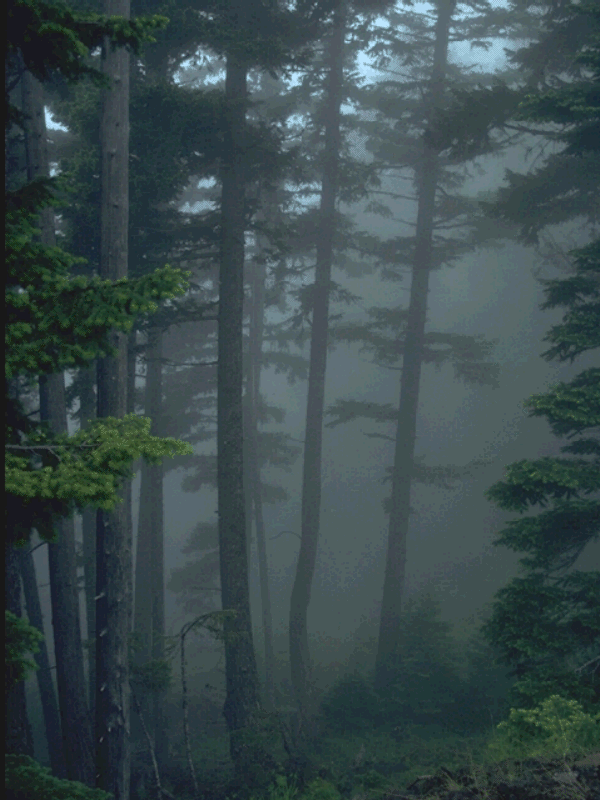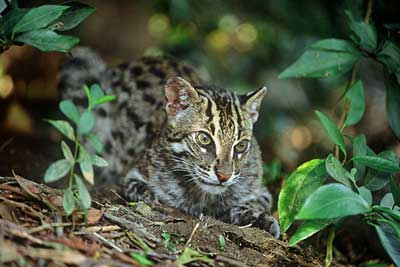
Sinharaja Rainforest – World Heritage
Dense, dark, wet and mysterious like all rain forests – the Sinharaja Rainforest is a primeval forest that’s ideal for meditation, relaxation and for scientific exploration. This relatively undisturbed expanse of primary forest is a Sri Lankan heritage as well as a world heritage site – the last patch of sizeable lowland evergreen Rain Forest that still remains more or less intact or undisturbed on the island.
The forest is steeped in deep legend and mystery. The word Sinharaja means, lion (Sinha) king (Raja) and the popular belief it that the legendary origin of the Sinhala people in Sri Lanka is form the descendants of the union the lion king who once lived in the forest and a princess.
Today, the spirit of the legend remains captured in solitude in the silent forest and the rising mist of the early dawn. More than time however separates the modern explorer in the Sinharaja forest from its legendary inhabitants, man has rapidly penetrated the seemingly inaccessible wilderness of the rainforest which once covered perhaps over 100,000 hectares of the South Western hills and lowlands. The present reserve is but a glimpse of its former glory, occupying a narrow sliver of land 21 km. in length and 3.7 km. in width, covering 11187 hectares of undisturbed and logged forest, scrub and fern land. Sinharaja rainforest was declared an International Man and Biosphere Reserve by UNESCO in 1978 also making it a world heritage site.
To the casual observer, the forest represents a tropical rain forest with a dense tall stand of trees, steep and rugged hills etched by numerous rocky streams and rivulets. The value of forests such as Sinharaja is well known for their functions as watersheds and store houses of great biological wealth. It is a rich treasure trove of nature with a great diversity of habitats and a vast repository of Sri Lanka’s endemic species found no where else in the world. Sinharaja therefore, represents an irreplaceable gene pool, a refuge for all those rare and endangered forms of life, both fauna and flora.
Climate
The Sinharaja lies within a rainfall range of 3,000 to 6,000 millimeters. Rainfall figures available for the last 60 years show values ranging from 3,614 to 5,006 millimeters in places, in and around the Sinharaja. The mean monthly rainfall data for the year 1981 to 1984 indicates the general pattern of rainfall with a minimum of 50 millimeters even during the driest month and two distinct monsoonal peaks.
The high annual temperature of the Sinharaja is typical of the tropics, recording little seasonal variation, but with marked daily ranges. The lowest mean monthly temperature has been abserved during the wettest season and the highest during the driest season. Conventional temperature patterns however change during long periods of drought or excessive rainfall.
HOTELS FOR ALL BUDGETS – SEARCH ANY CITY/TOWN/HOTEL!
A typical nature rivulet emerging from the dense forest of Sinharaja A common sight all over the wooded area with crystal clear water draining into the various waterways which makes the forest the most important watershed. This tropical humid rain forest plays a vital role in maintaining the quality and regulating the continuous supply of water. A numerous network of such rivulets found within the forest, feed the popular rivers Kalu Ganga to north and Gin Ganga to the south of Sinharaja.
The Flora
Based on numerous ecogeographical classifications of the vegetation of the island, the vegetation of the Sinharaja may be described either as a Tropical lowland rain forest or Tropical wet evergreen forest. However, the most resent classifications adopted by the UNESCO – MAB programme identifies it as a Tropical Humid Ceylonese Rain Forest of the Indo – Malayan realm.
The vegetation within the reserve can be broadly categorized into three main types based on topography. viz. the lower slopes and valleys (150 – 600 meters), middle slopes (600 – 1000 meters) and the upper slopes and ridges (above 1,000 meters)
Vegetation
The basic framework of the intricate rain forest ecosystem is the complex vegetation structure. At first glance, the forest seems to be a bewildering chaos of vegetation. However, a closer look reveals that the vegetation can be categorized on the basis of several factors such as life-forms (trees, shrubs, herbs and woody climbers), atrata or groups of plants living under similar conditions of light and moisture with each group having its own “life-style” (the canopy, subcanopy or under-storey, shrub layer and ground layer, stranglers, epiphytes, parasites and saprophytes). They could all either stand on their own, like trees and thus be mechanically independent, or be dependent, like climbers, epiphytes and parasites.
Stranglers begin their life as dependents, but later establish their own support. The plants could either be photosynthetic, thus nutritionally self sufficient or non-photosynthetic like the saprophytes ; some, on the other hand, are totally parasitic. The plants could also represent several stages of maturity e.g. seedlings, saplings, poles, etc. As expected, the variety of combinations that could exist in the forest can be enormous. These are the factors that form the basis of scientific descriptions of the vegetation structure.
As in all rain forests, in Sinharaja too. the forest is tall with the canopy reaching a height of 30 to 45 meters. The canopy is well packed with tree crowns and is usually devoid of emergent trees i.e. trees which reach over the main layer of packed crowns.
Among the large trees of the canopy, columnar tree boles are typical. These are supported by plank buttress roots a typical characteristic of large rain forest trees. Several theories have been put forward to explain the presence of buttresses, the most accepted one being that they are necessary to stabilize the unusually tall tree trunks, which support a crown at the very top and have a shallow root system. In the Sinharaja however, buttresses are few and not as developed as in other South-East Asian rain forests.
The root systems of rain forest trees are relatively superficial. Only a few trees have deep penetrating tap roots. There is growing interest in the study of the underground structure of trees and the part they play in nutrient cycling. Also of current interest is the symbiotic association between tree tree root and fungireferred to as mycorrhizae which facilitate nutrient absorption.
HOTELS FOR ALL BUDGETS – SEARCH ANY CITY/TOWN/HOTEL!
The Fauna
 The complex vegetation structure of the rain forest provides a variety of dwelling places or niches for animals. Thus, not surprisingly, there is a rich diversity of fauna within a rain forest. Animals are often thought to be a passive or dependent component of the ecosystem that do not contribute actively to the continuity and growth of the forest. This, however, is contrary to the true facts. Although dependent on plants for food, animals also carry out functions vital to the growth of plants such as pollination and seed dispersal. These interaction and seed dispersal. These interaction are often complex and highly specialized, and have developed as plants and animals evolved together over millions of years. Studies on rain forest fauna, however, are relatively recent and little is known of their strategies for survival, and of the details of the role they play in propagating rain forest floral species.
The complex vegetation structure of the rain forest provides a variety of dwelling places or niches for animals. Thus, not surprisingly, there is a rich diversity of fauna within a rain forest. Animals are often thought to be a passive or dependent component of the ecosystem that do not contribute actively to the continuity and growth of the forest. This, however, is contrary to the true facts. Although dependent on plants for food, animals also carry out functions vital to the growth of plants such as pollination and seed dispersal. These interaction and seed dispersal. These interaction are often complex and highly specialized, and have developed as plants and animals evolved together over millions of years. Studies on rain forest fauna, however, are relatively recent and little is known of their strategies for survival, and of the details of the role they play in propagating rain forest floral species.
Unlike the flora, the fauna of the Sinharaja has received comparatively little attention, and descriptions of the fauna had been limited to the occasional report by enthusiasts. It was only as recently as 1981 that preliminary systematic investigations were initiated. These studies were confined to the western sector of the Reserve, the sector which had been seriously disturbed by the logging project of the 1970’s, and were carried out mainly to determine the effects of logging and deforestation on small mammals. However, during this project a determined effort was also made to identify and inventorise the fauna in general, a very necessary task in view of the scarcity of information.














8 COMMENTS
Nice Site layout for your blog. I am looking forward to reading more from you.
Tom Humes
this is a good site
[…] Sinharaja Rainforest | World Heritage Site | Sri Lanka | outboundholidays.com […]
[…] Sinharaja Rainforest | World Heritage Site | Sri Lanka | outboundholidays.com […]
[…] Sinharaja Rainforest | World Heritage Site | Sri Lanka … […]
[…] Sinharaja Rainforest | World Heritage Site | Sri Lanka … […]
[…] Sinharaja Rainforest | World Heritage Site | Sri Lanka … […]
[…] The main city of Sri Lanka Colombo and the surrounding area would be of great interest for those who is want to explore the treasures of the world. Sri Lanka is home to eight world heritage sites: Galle, Kandy, Sigiriya, Anuradhapura, Polonnaruva, Dambulla cave temple, the Central Highlands, and Lion-King Sinharaja tropical rainforest. […]
Comments are closed.